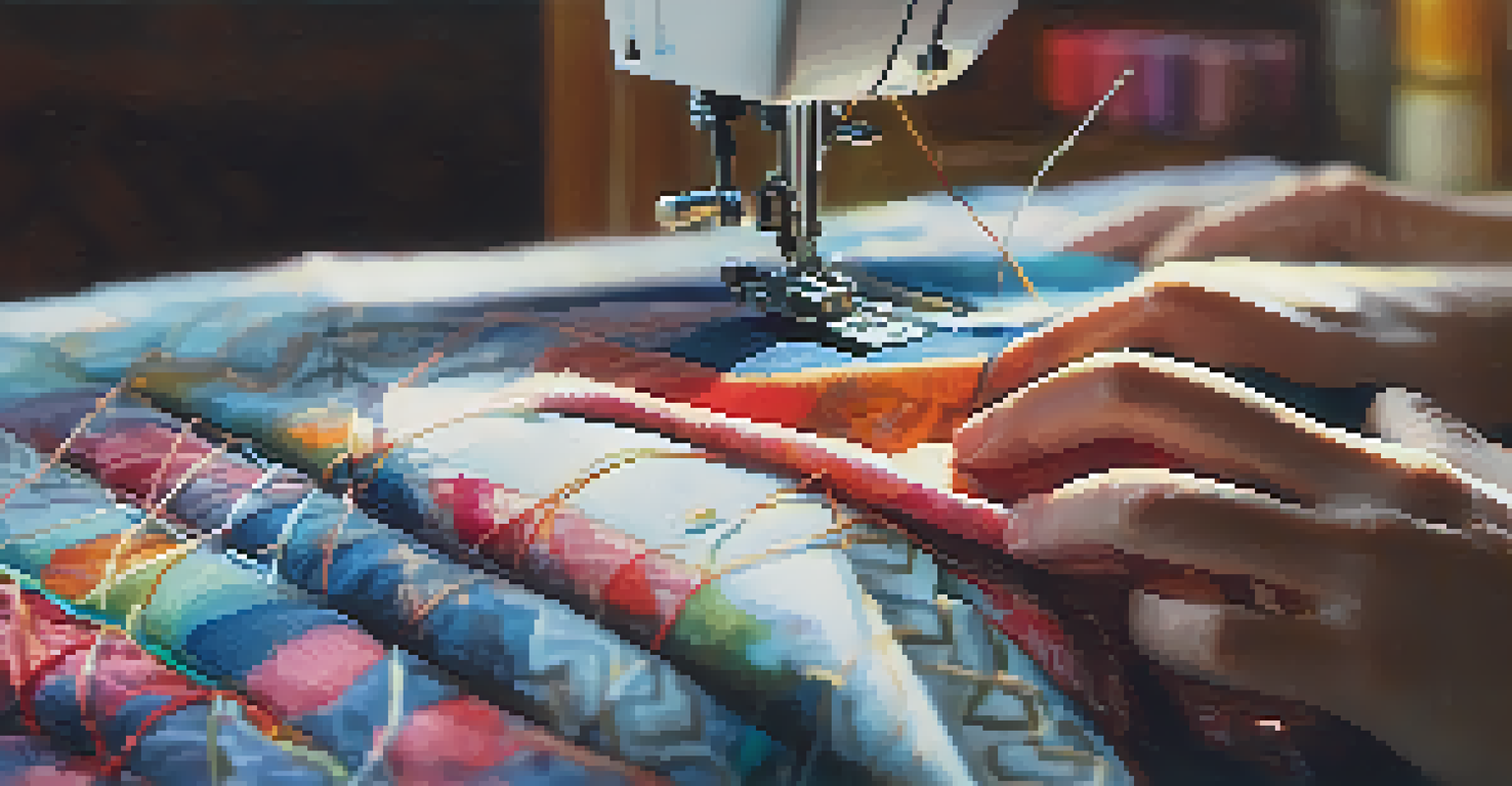Understanding Sustainable Fashion: A Guide for Conscious Shoppers

What is Sustainable Fashion and Why Does It Matter?
Sustainable fashion refers to clothing that is designed, manufactured, and consumed in a way that is environmentally friendly and socially responsible. It encompasses everything from the materials used to the labor conditions in factories. As consumers become more aware of the impact of the fashion industry on the planet, understanding sustainable fashion is crucial.
Fashion is the second most polluting industry in the world, just after oil.
The fashion industry is one of the largest polluters in the world, contributing significantly to waste and carbon emissions. By choosing sustainable options, shoppers can help reduce their environmental footprint. It's not just about looking good; it's about feeling good knowing your choices contribute to a healthier planet.
Many brands are now leading the way in sustainable practices, offering eco-friendly materials and transparent supply chains. By supporting these brands, conscious shoppers can drive the demand for more sustainable practices within the industry.
Key Principles of Sustainable Fashion
There are several key principles that define sustainable fashion, such as ethical production, eco-friendly materials, and fair labor practices. Ethical production means ensuring that workers are treated fairly, paid a living wage, and work in safe conditions. This principle emphasizes that fashion should not come at the cost of human rights.

Eco-friendly materials are another cornerstone of sustainable fashion. This includes organic cotton, recycled polyester, and even innovative materials like Tencel made from sustainably sourced wood pulp. When you opt for clothing made from these materials, you're reducing the reliance on harmful chemicals and non-renewable resources.
Sustainable Fashion Explained
Sustainable fashion focuses on environmentally friendly practices and ethical labor throughout the clothing lifecycle.
Lastly, sustainable fashion promotes the idea of circularity, which encourages recycling and upcycling clothes. Rather than discarding old garments, find ways to repurpose or donate them, thereby extending their lifecycle and minimizing waste.
How to Identify Sustainable Brands
Identifying sustainable brands can seem daunting, but there are some telltale signs to look for. First, check for certifications like GOTS (Global Organic Textile Standard) or Fair Trade, which indicate adherence to certain sustainability standards. These certifications can help you shop with confidence, knowing the brand meets specific ethical criteria.
The most sustainable thing you can do is to buy less and choose well.
Next, take a look at the materials used in the clothing. Brands that prioritize sustainability often highlight their use of organic or recycled materials in their marketing. A transparent brand is likely to share information about their supply chain and production processes.
Lastly, consider a brand's commitment to transparency about its practices. Brands that are open about their sourcing, manufacturing, and labor conditions demonstrate a genuine commitment to sustainability, making it easier for you to make informed choices.
The Importance of Quality over Quantity
One of the key tenets of sustainable fashion is prioritizing quality over quantity. Fast fashion promotes a cycle of buying cheap items that often wear out quickly, leading to more waste. In contrast, investing in high-quality pieces means you’ll not only have a wardrobe that lasts longer, but you'll also reduce your overall consumption.
Think of it this way: it's better to have a few well-made, versatile pieces that you love than a closet full of items you rarely wear. By choosing quality garments, you’re also encouraging brands to focus on craftsmanship and sustainable practices, rather than churning out mass-produced clothing.
Quality Over Quantity Matters
Investing in high-quality clothing reduces waste and encourages sustainable production practices.
Additionally, high-quality fashion items often have timeless designs that can be styled in multiple ways, making them more adaptable for different occasions. This approach not only benefits your wardrobe but also supports a more sustainable fashion ecosystem.
Embracing Second-Hand and Vintage Shopping
One of the most effective ways to shop sustainably is to embrace second-hand and vintage clothing. This practice not only reduces waste but also gives new life to garments that may otherwise end up in a landfill. Thrift stores, consignment shops, and online platforms have made it easier than ever to find unique, stylish pieces without contributing to fast fashion.
Shopping second-hand also means you can find high-quality items at a fraction of the original price. Plus, vintage clothing often comes with its own story, adding character to your wardrobe. Imagine the adventures a vintage dress has been through before it found its way to you!
Furthermore, by choosing second-hand fashion, you're helping to create a circular economy where clothes are reused and repurposed. This not only helps the environment but also supports local charities and businesses that rely on thrift sales.
Caring for Your Clothes to Extend Their Lifespan
Once you've invested in sustainable fashion, it's important to take care of your clothes to ensure they last as long as possible. Simple practices like washing in cold water, air drying, and avoiding excessive ironing can significantly extend the lifespan of your garments. This not only saves you money but also reduces the need for replacements.
Additionally, consider learning basic repairs, such as sewing a button or fixing a hem. These small skills can dramatically increase the life of your clothes, keeping them out of landfills longer. Remember, each time you repair rather than replace, you're making a sustainable choice.
Second-Hand Shopping Benefits
Embracing second-hand and vintage clothing promotes a circular economy and reduces landfill waste.
Finally, be mindful of how you store your clothes. Proper folding, using garment bags, and even rotating your wardrobe can prevent wear and tear, ensuring your favorite pieces stay in great condition for years to come.
The Future of Sustainable Fashion
The future of sustainable fashion looks promising, with more brands recognizing the need for change. Innovations in textile recycling, biodegradable materials, and eco-friendly production processes are on the rise, pushing the industry toward a more sustainable model. As technology advances, we can expect even more creative solutions to reduce fashion's environmental impact.
Consumer demand plays a significant role in this shift. As conscious shoppers continue to prioritize sustainability, brands are incentivized to adopt greener practices. This creates a positive feedback loop where sustainability becomes not just a trend but a fundamental aspect of the fashion industry.

Ultimately, by choosing sustainable fashion now, you're contributing to a movement that prioritizes the planet and its people. Together, we can shape a future where fashion is not only stylish but also responsible, ensuring that it remains a viable option for generations to come.